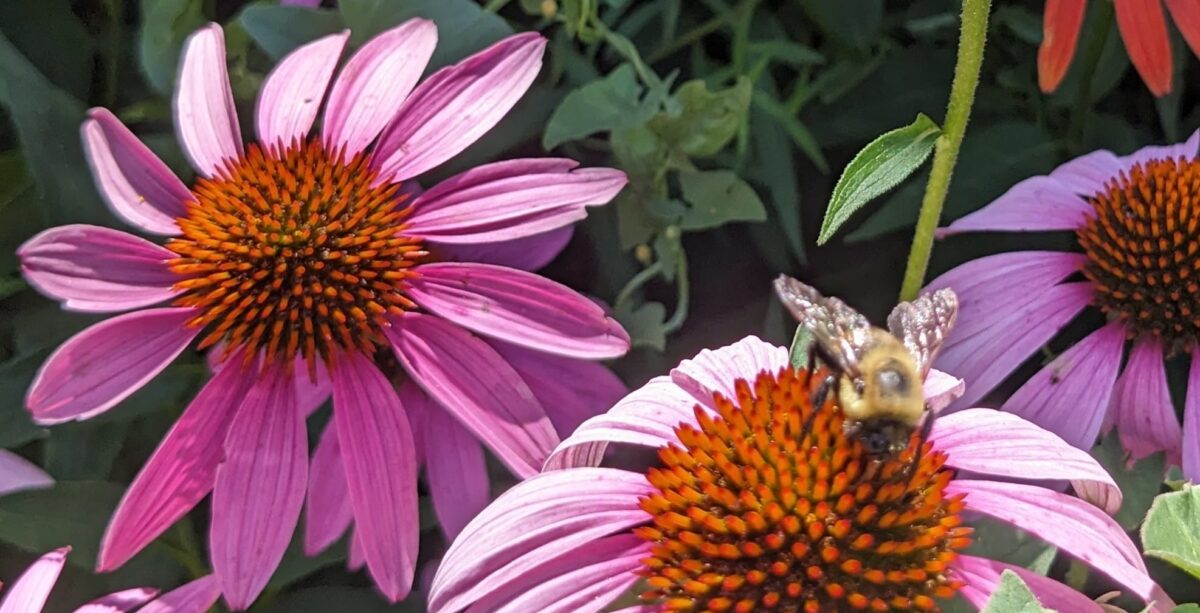
We plant Tomatoes, among other things, in our raised beds every year. The weather varies from year to year, so we plant early crops and late crops a few weeks apart to be sure we get tomatoes all season long. The pests that hit us vary from year to year also somewhat dependent on the weather. Most years we get the hottest driest weather in early to mid-August. That is when we get a pest that hits our kale and greens the most. This year that came early so out greens got hit early. That was before I decided to start my blog, so I did not get pictures.
This week our tomato plants got hit with aphids. Most of our neighbors already harvested their tomatoes and are done for the season, but we still have quite a few left, so we are doing what we do to try and get rid of or at least control them until first frost. First let me show you what they look like and what they do to your plants. The following photos show first actual size plant that is infested. Then you will see the close-up photos to help you identify if you have the same pests.



We had a couple days of cool and rainy weather, so we were working on other things and did not spend as much time in the garden as usual. That is all the time it took for the aphids to show up. Our first clue was leaves turning brown as they might in hot dry weather, but our hot spell had ended at least for a week so that was not likely. That is when we inspected the plants more closely and found the aphids. Time to take action. As we have continued to grow organically so as not to harm helpful insects, birds, rabbits and any other wildlife, we have found safer methods to control pests.
We have a large sprayer that we are using it to spray them. So, I added about three tablespoons of dish soap that is safe to plants, to the full container of water. During the shadiest time of day yesterday I went out and sprayed all our plants, including the bell peppers. They were not hit by the aphids yet but are prone to be, so I do not want the aphids to just move from the tomatoes to the peppers. A couple hours later I went out and started removing a few of the dead leaves and stems. It was getting dark, so I did not get them all.


Today I went back out to check on the tomatoes. Still have aphids but not near as many as yesterday. I removed several more leaves and stems and sprayed again. It is cloudy today so I will do this several times throughout the day. So far, I have been out to spray three times to spray and continue to remove more of the damaged leaves. There are still several tomatoes and blooms, so it is worth the effort to save them. Each time I go out I see fewer aphids. The soap works differently than harsh chemicals that would kill on contact. As I understand it, they eat the soap and it dries them out. So, it takes a little longer, but it is safe on the plants and the fruit which will be ripening soon.


Last but not least, my handy little garden helper. Yes the blue bucket that I put weeds in to carry to the compost (not the dead and dying tomato leaves that would infest my compost) is a handy thing, but I am talking about the spider pest control helper. He lives in the back corner above our plants. I also have several Praying Mantis in this garden, but they would not come out for a picture today.
